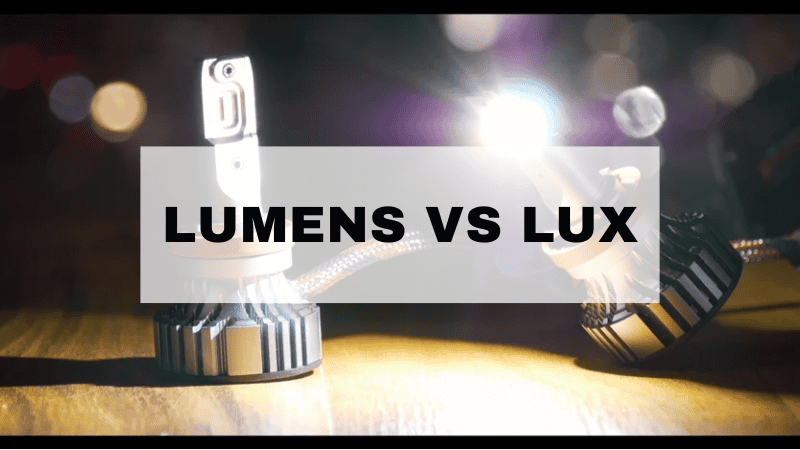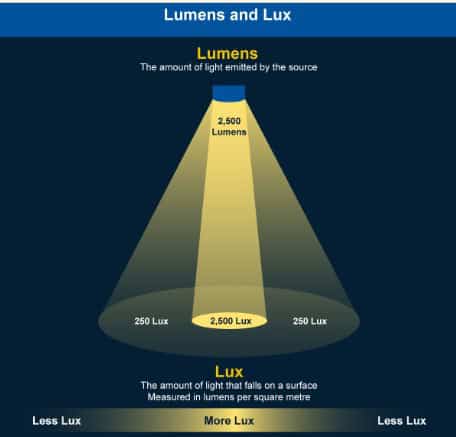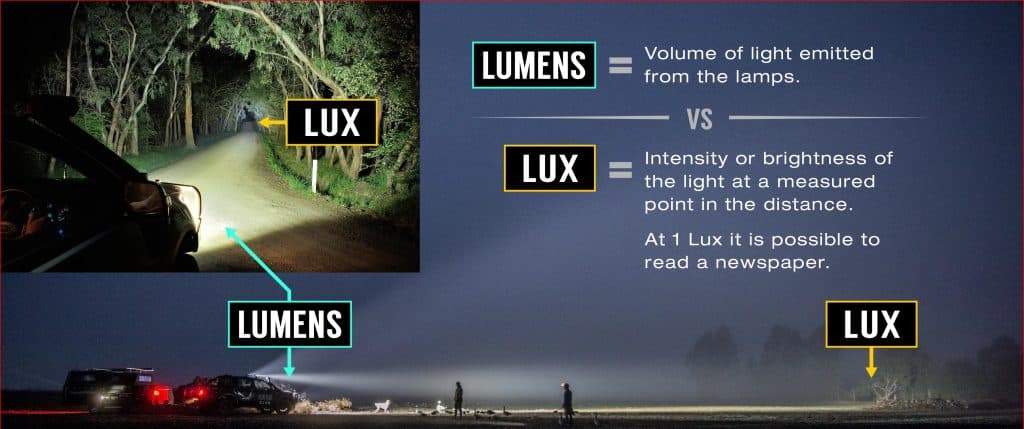Have you ever wondered about the terms "lux" and "lumen" when it comes to lighting? Let's break it down in an easy to understand way.
In essence, a lumen refers to the total amount of light that is emitted by a source. Itʼs like measuring the entire volume of light that a bulb gives off. On the other hand, lux measures how bright that light actually appears on a surface. To put it simply, lux tells you how intense the light is when it reaches an area.
If you want a bit of science behind it, the lumen originates from the light created by a standard candle. As for lux, itʼs a bit tricky—it refers to one lumen of light evenly spread over a space of one square meter. So now you know the basics of these two important lighting terms.
LUMENS: Volume of light emitted from the lamps.
Letʼs look at a few examples to make things clearer! Consider a standard 55w or 60w halogen bulb, commonly used in headlamps. These bulbs emit around 1,500 Lumens, and most of the light shines out onto the road. Typically, both the High Beam and Low Beam settings have similar Lumen outputs. However, we often think of High Beam as brighter and longer-reaching than Low Beam. Why is that? Well, Low Beam spreads its light more widely to illuminate a larger area, while High Beam focuses its light into a tighter, longer-reaching beam. Even though both settings have similar Lumen counts, High Beam achieves a greater Lux at a certain distance. So, while Lumen reflects the total light output, Lux tells us how concentrated that light is in a specific spot.
LUX: Intensity or brightness of the light at a measured point in the distance. At 1 lux it is possible to read a book.
On the flip side, driving lamps are all about sending that light down the road as far as possible, which is where Lux comes into play. Lux measures how intensely that light reaches a specific point at a distance. Did you know that 1 lux is considered bright enough to read a newspaper? Thatʼs why most lights are measured for how far away they can shine at least 1 lux on a surface. For example, if a light is rated at 1 lux at 900 meters, it means if you held a piece of paper up 900 meters away from the light, it would receive just enough illumination (1 lux) for you to read it comfortably.
When we think about work lamps and driving lamps, thereʼs a neat tradition behind how we measure them, and it really clears things up! Work lamps usually get their measurement in Lumens, which indicates the total amount of light they produce. This makes sense because a wide flood work lamp doesnʼt need to concentrate its light into a tiny spot; itʼs all about spreading that brightness evenly over a broader area.
The exciting rise of L.E.D.-based driving lights and bars has brought both Lux and Lumen into the spotlight when it comes to performance! These modern lights tend to shine a bit wider than traditional Halogen or HID lamps, but not quite as broadly as a work lamp. This unique positioning can make it a little tricky to compare Lux and Lumen measurements. However, the best L.E.D. options out there offer a fantastic combination of high Lumen output and impressive 1 Lux distances, which means you get the best of both worlds – a nice wide beam that also reaches far.
To truly grasp how a light performs, it's important to understand both Lumen (which indicates power) and Lux (which focuses light). Of course, there are other factors to consider, such as beam angle and color rendering, that play a role in creating a fantastic light experience—but thatʼs a conversation for another day.


